- Rent, Lease, or Purchase
- |
January 27, 2021
Buried Shipping Container: Applications, Benefits, and Challenges
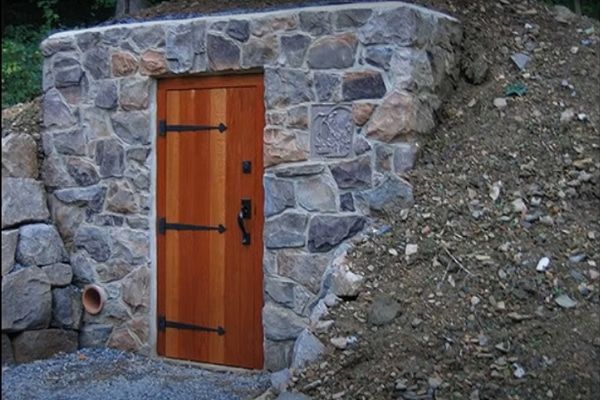
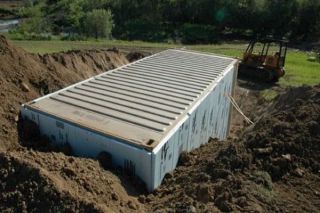
Shipping containers are a cost-effective and efficient option for building robust structures. While shipping container homes, offices, and portable storage units have become popular alternatives to traditional construction, people are also increasingly looking into buried container solutions for underground systems. However, buried shipping container construction differs significantly from its aboveground counterpart.
If you're planning on building an underground bunker or a storm shelter, read on below. We’re looking into how to bury shipping containers for underground applications.
Are Shipping Containers Safe to Live in?
A shipping container bunker should serve as a safe haven. You do not want your container to fail or the walls to collapse due to intense ground pressure. If you're using an adequately reinforced shipping container, you’ve already eliminated most of the risks surrounding a structural failure.
Still, there are some additional factors that you should consider while using a shipping container bunker underground to ensure adequate safety.
- Container walls may have an anti-rust or paint coating. Therefore, you must insulate the container walls to ensure that you do not inhale toxic fumes.
- Your container may have wooden flooring treated with chemicals. In such cases, you can replace the wood floor with marine plywood or install an additional layer of timber over the existing floor space.
Most safety issues generally arise from not buying the correct shipping container. If you purchase your container from a reliable supplier, you will most likely receive a structure that's safe from these hazards.
Shipping containers with appropriate safety measures, reinforcement, and ventilation can be incredibly safe as underground bunkers. Now, let’s take a look at how to make shipping containers ready-to-use for underground purposes.
What Are the Best Ways to Reinforce a Shipping Container?
A shipping container has a monocoque structure, which means the corner frames carry most of the load while the walls are comparatively weaker. When you bury a shipping container underground, the ground pressure from all sides can be intense. Some underground bunkers have about six feet of soil layer over them.
Even if the walls do not fail completely, cracks and dents can be detrimental to the structural integrity of your shipping container bunker. Therefore, every underground container requires appropriate reinforcement to improve its strength.
So, how much strength does your container need? Think of a heavy truck or trailer moving along the surface above the ground. In that case, you’ll need to ensure the bunk doesn’t cave from the additional pressure created by the vehicle above. Below are some of the best ways to reinforce buried containers.
Burying Your Container
If you bury a shipping container correctly, you can help prevent any setbacks from occurring later on. Remember, an underground shelter that does not come in direct contact with neighboring soil will not cave in due to the pressure. Here are some steps you must follow while burying cargo containers for underground use:
- Digging a hole: You'll need a pit that's large enough to bury a shipping container bunker underground and the support reinforcement. Leave about an additional four-foot space along each side. For instance, if you're using a 20-foot unit, you must build a 28 ft. long and 16 ft. wide ditch.
- Burial Depth: Depending on how much of the container you want to remain above the surface, you can determine an appropriate depth. A 7-foot deep pit will suffice in most cases. If you want a container completely hidden from plain sight, you'll need hole 10-feet deep.
- Burying shipping containers upside down: Generally, the floor of a shipping container is thicker than the roof. When you bury shipping containers underground, you want the top surface to bear more weight. Planting a container upside down allows the thicker floors to act as the roof of your bunker.
Gabion Cages
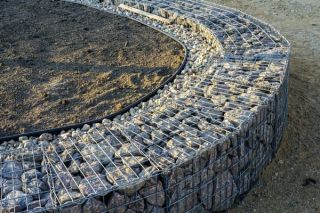
A gabion cage is a simple yet robust solution for adding reinforcements around your container walls. Build a steel cage in the space surrounding your underground bunker and fill it with stones to create a barrier between the soil and the container.
Structural Changes
Modifying the shipping container's structure with additional support members is the most effective method of reinforcing shipping containers.
Weld strong steel bars along the roof and the periphery of the container. You can use I-beams or strong square tubes as reinforcements. The welded supports will increase the load-bearing capacity of the container and ensure that it won't cave in easily.
Rock/Sand-filled Barrels

You can line up multiple barrels along the edges of the container to ensure that it does not come in contact with the surrounding soil. You could also use sandbags to build a wall around your bunker. While finding used plastic barrels and rock is cheaper than building a gabion cage, they do not offer as much strength as other methods. If there's considerable human or vehicular activity over your bunker, we recommend you stick to other alternatives.
Challenges In Burying a Shipping Container
In addition to issues related to container strength, other challenges may crop up when burying your unit. For instance, a Corten steel container may rust rapidly when surrounded by soil that contains high levels of saline. In this case, a protective layer of paint may help prevent corrosion though it may not suffice. Advanced systems and pipelines use cathodic protection to avoid rusting.
A shipping container root cellar must also have uniform walls. Any cracks or dents may compromise the insulation and circulation of the inside air, leading to humidity build-up and mold growth.
Contaminated air may lead to suffocation or health issues, as well. If you bury your shipping container in an area with a lot of dirt or pollution, you’ll need to install an air filtration or circulation system. You must also invest in an effective strategy for managing human waste and greywater. Accumulation of wastewater may lead to bacterial growth, foul odor, and health hazards.
Here are some ways to tackle these challenges:
- Invest in a suitable shipping container that's free from toxic paint fumes and wood-treatment chemicals.
- Bury the container in a safe place. Select an orientation that transfers maximum load at the corner posts and the thicker sections.
- Reinforce the container using steel beams to improve the structural integrity or use a suitable method to prevent the walls from coming in direct contact with soil.
- Apply a thick layer of coating to avoid rusting.
- Design a robust air circulation and filtration system to allow an adequate supply of fresh air and maintain good ventilation inside.
- Install a composting system for managing waste effectively.
- Build an emergency exit.
- Ensure adequate food and other essential supplies.
- Add furniture, gadgets, and books to make your survival bunkers more comfortable.
Now that you know how to transform cargo containers into efficient underground buildings, let’s look at the ways you can use a container buried underground.
Buried Shipping Containers Applications

People bury shipping containers for different reasons. While some may do so to secure more storage to stash valuables, others may be looking for a safe space from natural disasters. A shipping container will typically last about fifteen years for either application.
Listed below are a few more ways you can utilize a buried shipping container:
- Storage: Cargo containers provide enough space for you to store about fifty years of food supply. You can also store valuables, large furniture, electronic appliances, and memorabilia. Keeping goods in a bunker will clear out space in your home for other activities.
- Storm shelters: A buried cargo container can protect you from excessive rain, heat waves, and fallout from dangerous storms.
- Underground shelters: Underground bunkers are an excellent option for when you need a safe place during civil unrest of wars.
- EMP-proof bunkers: An imminent nuclear attack or an EMP blast may have dire consequences. You can build an EMP-proof bunker that shields you from radiation and other aftereffects.
Note that you may have to modify the structure slightly depending upon your application. For instance, if you want an EMP-proof container, you'll need to build a Faraday cage.
Advantages and Disadvantages of Using Buried Shipping Containers
Using underground shipping containers comes with its own set of pros and cons. Let's look at both the benefits and the challenges they pose.
Pros
You can buy a used container at a fraction of the cost of a concrete structure. Their modular build allows you to easily make all kinds of modifications. Since cargo containers are highly portable, you can get a unit delivered directly to the site where you intend to bury them.
Cons
You cannot use a container underground without making modifications. Burying a shipping container in as-is condition will cause the roof and walls to cave in. Therefore, you'll need a good amount of reinforcement.Adding a ventilation system, new flooring, insulation, and framing can also be time-consuming, tedious, and expensive.
There are multiple examples of people who failed to ensure adequate reinforcement and had their container walls collapse within days.
A well-built container bunker underground can function as a storm shelter, survival bunker, and storage unit. However, an inefficient design will fail quickly, leading to loss of property, and may even pose a threat to your health and life. Consult with a container modification expert before you finalize the design of your underground container structure.
See also: How to Reinforce a Shipping Container for Underground Use
Complete Guide to Shipping Container Campers
Conclusion
Shipping containers are an excellent choice for all kinds of structures. However, when you bury a shipping container, you must make adequate changes to ensure that your underground unit is safe for use. You must also install appropriate auxiliary systems for ventilation and waste management. Well-designed modifications and safety precautions can help you enjoy a comfortable stay in your underground unit.
Mobile Modular Portable Storage is one of the leading suppliers of top-notch shipping containers. We provide storage container units in multiple sizes with optional customizations for residential, commercial, and industrial applications. Call us at 866-459-7600 or get in touch with us to learn more about our industry-specific container solutions for rent and sale.
Frequently Asked Questions
Can You Bury Shipping Containers Underground?
Although you can bury shipping containers underground, you must modify the structure or create a protective wall around the container to ensure it bears the weight of the surrounding soil layer.
Is It Safe to Bury a Shipping Container?
It is not safe to bury a shipping container without adding support members to its design. Shipping containers have a monocoque construction. That means the corner frames carry most of the weight, while the walls are comparatively weaker.
As an underground container faces intense ground pressure from all sides, the walls may cave in. While burying a shipping container, ensure that you add robust reinforcements for safely using the structure.
How Do I Reinforce a Shipping Container to Bury?
You can weld strong steel bars at the roof and the walls of the container to ensure that they don't shift in due to ground pressure. Alternatively, you can build a protective fence using a Gabion cage, rock-filled barrels, or sandbags to prevent direct contact between the container and the nearby soil layer.
Related Blogs
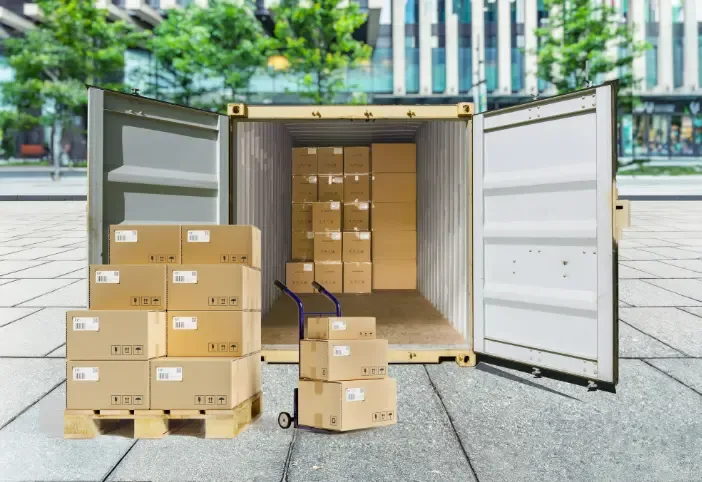
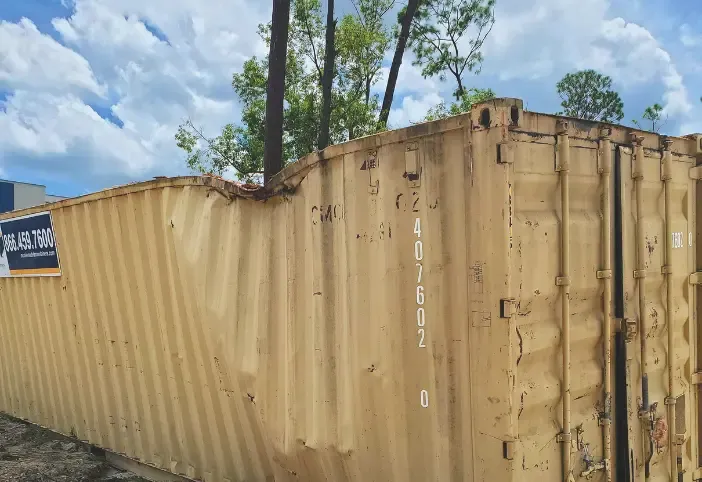
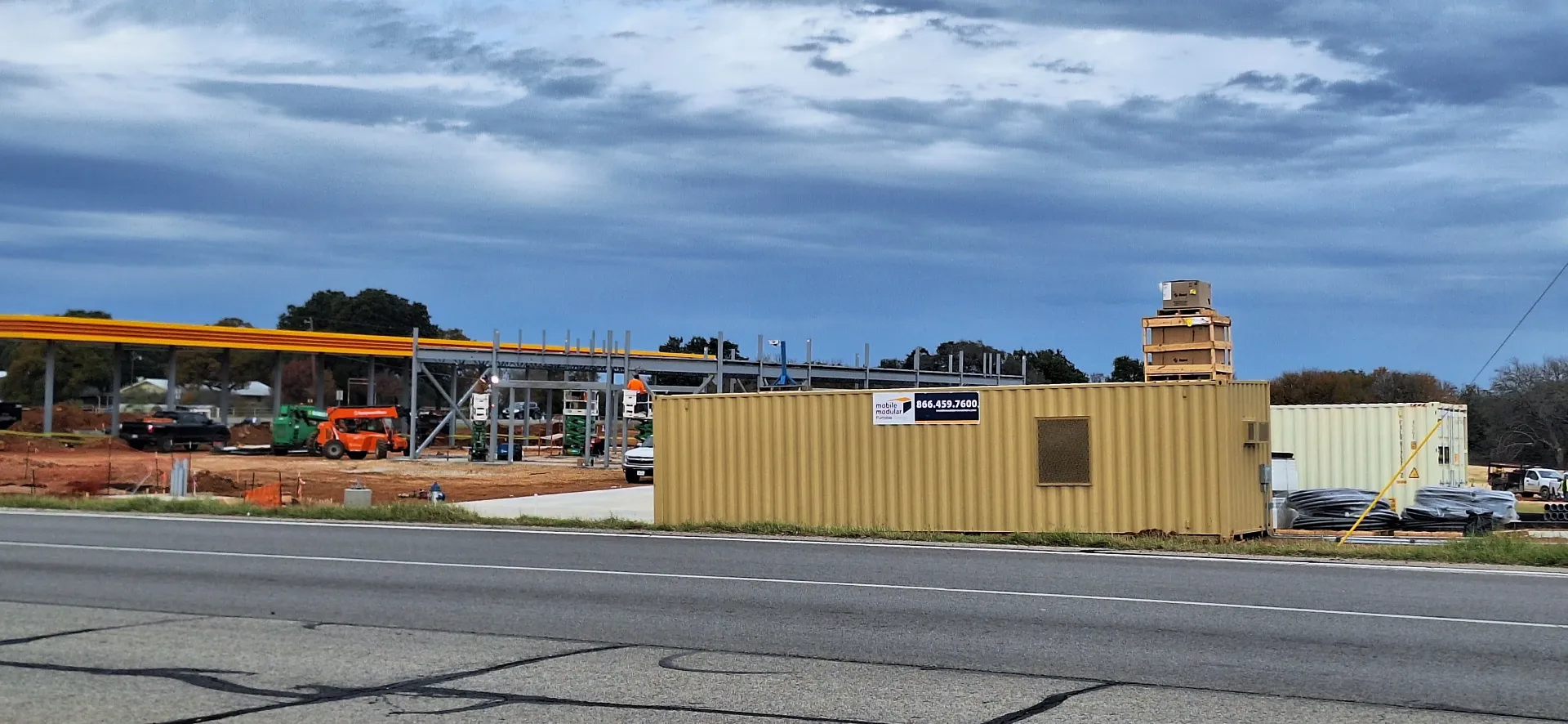
Subscribe to Our Blog
Enter your email address to subscribe to the blog and receive the notification of new posts by email.
Thank You for Subscribing to Our Blog!
Stay tuned for upcoming emails with valuable content that we hope will enhance your experience with our brand.
Both Pardot and mg360 form submissions failed.
